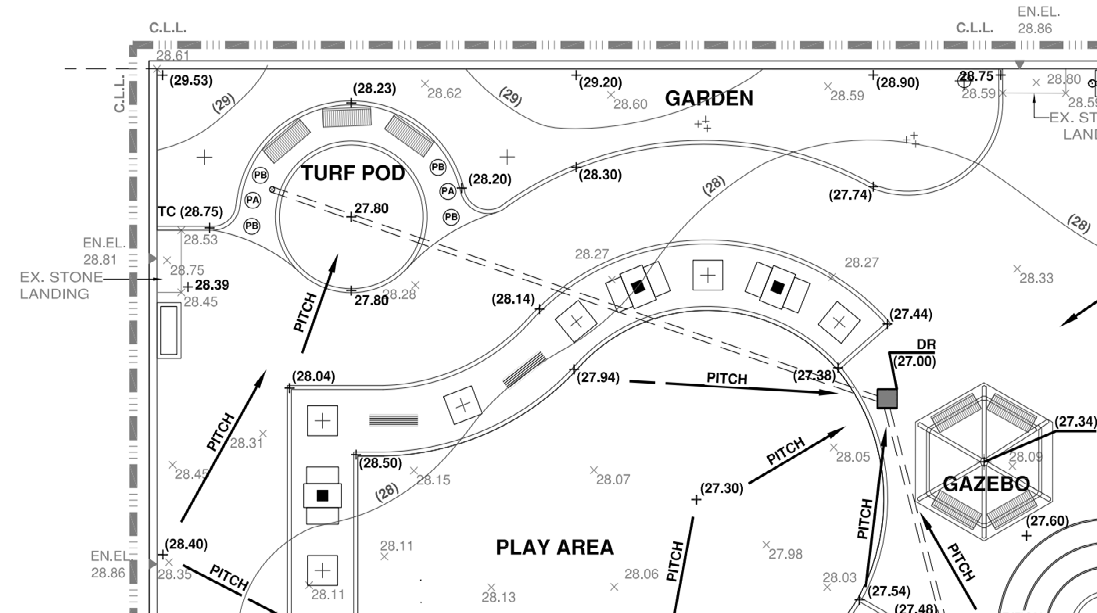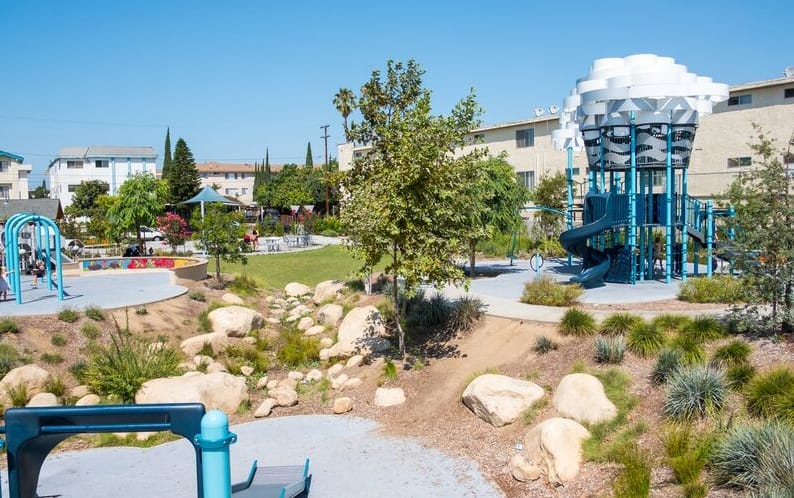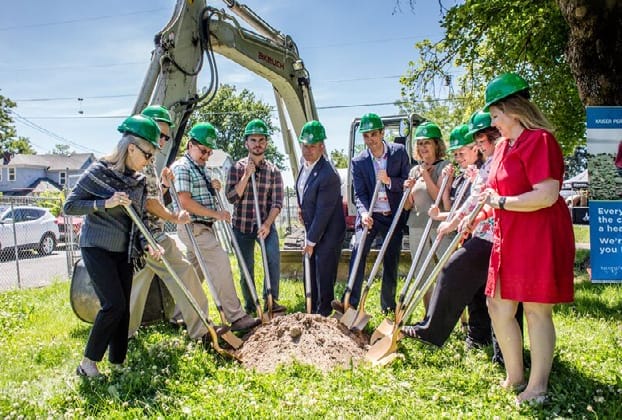
STEP 14: Create Construction Documents
After securing school district approval, your designer will begin creating the detailed construction documents. These documents will include precise drawings and specifications that contractors will use to build the schoolyard.
Key considerations during this phase:

Construction documents lay out the specifics of how your community schoolyard is to be built. A professional designer should be hired to handle the
process.
© STUDIO HIP LANDSCAPE ARCHITECTURE
STEP 15: Plant and Tree Selection
When thinking about plants for your schoolyard, choose plants that are hardy, safe to have in a schoolyard (e.g., avoid thorns), appropriate to soil and light conditions, and relatively easy to care for. Check the USDA Plants Database website for plant toxicity (https://plants.usda.gov/characteristics.html). Keep the plant palette simple. It may be tempting to select a host of pollinator plants. Instead, select three to five species and group plants together in swaths so identification and maintenance are easier, especially during weeding and fall cutting back. Understand that perennials will need much more care than shrubs and trees. Grasses will need to be cut back in late winter. Avoid meadow seed mixes; weeds will invariably enter the plantings and are difficult to distinguish in a meadow planting. Do not expect parents, teachers, or custodial staff to have advanced horticultural knowledge. If possible, choose natives and include pollinators, plants with sensory interest, and a variety of colors and textures. It is a good practice to work with your community to select plants, noting that the selected plants could change based on availability.

Choose plants that are hardy, safe, and appropriate for local conditions.
© ANNIE BANG
STEP 16: Final Partner Review
Submit your construction documents to the school district, public funding partners, and other partners as required for final approval and permission to bid. Anticipate at minimum a couple of weeks for review. Solicit approval in writing from public partners so you can keep a clear paper trail of approvals.
STEP 17: Permitting
Depending on local codes, you may be required to obtain construction permits. Ask your designer to do code research during the schematic design phase to anticipate the requirements. Ideally, you will have hired a designer/landscape architect with experience building in your locality. Permitting agencies will want to review a variety of details, including Americans with Disabilities Act (ADA) compliance, footing design, sediment control details, and many other aspects of the design. You can work with your designer to prepare permit drawings and drop them off for the selected contractor to pick up.
STEP 18: Bid Out the Project
Once you have final, approved construction documents and the proper permits to begin construction, it is time to find a contractor. Work with your school district to understand its bidding requirements. In some cases, you might have to go through a public bidding process. In other cases, you may have more flexibility. You will want to work with your design professional on securing the contractor. With government- funded projects, this usually happens by inviting contractors to place bids on the construction; the contractor with the lowest bid wins the job. However, private funding may give you more flexibility in contracting. Should you have the flexibility to select a contractor, we advise you to be very careful about whom you hire. Review bids carefully and check references. Some contractors are well respected and diligent, while others will leave you with a mess. School districts often hold lists of approved contractors.
STEP 19: Contracting
We do not recommend that community groups enter into a contract without legal guidance. Some school districts prefer to hold the construction contract themselves. We recommend working closely with your school district regardless of who holds the contract. If you hold the construction contract, make sure you are well aware of the risks, responsibilities, and rights associated with construction. Whoever holds the contract should also hold the levels of insurance required by the school district and have a right of entry or license agreement to do the work. Depending on requirements, you may need to work with a lawyer to set up agreements.
STEP 20: Construction
Ideally construction happens during the summer months, but this is often not possible for complex projects with many components. It is important that your selected contractor follows local regulations and maximizes security around the site during construction. You will want to retain your design professional to provide construction administration services during the construction phase. This includes reviewing submittals, inspections, and walk-throughs to develop the punch list, preparing the certificate of substantial completion, and signing off on final completion. Schedule on-site meetings every other week to track progress.

Construction is an exciting time. Work with your design professional to
ensure that construction is moving forward according to the design and
schedule and arrange for regular on-site meetings.
© MAE WOLFE


